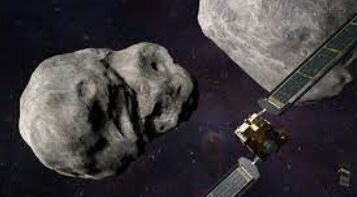Asteroid Apophis: Closest encounter with Earth in Modern History Sparks NASA's Mission of Defense
A rare event is predicted as an asteroid the size of the Empire State Building will pass within 20,000 miles of Earth, giving NASA a unique opportunity to study it in detail. The mission aims to gain insight into planetary formation and potentially develop a defense system against asteroid collisions. The asteroid, named Apophis, will become visible to the naked eye during its flyby and will be observed by NASA's rebranded spacecraft, OSIRIS-APEX. The mission will provide valuable information about the structure and properties of asteroids and contribute to the development of effective asteroid-deflection strategies. While Apophis doesn't pose an existential threat, studying it helps scientists understand the risks and consequences of similar events.
In a rare event, astronomers predict that an asteroid approximately the size of the Empire State Building will pass within 20,000 miles of Earth in about 5-1/2 years, making it the closest any celestial object of its size has come to our planet in modern history. This close encounter will provide a unique opportunity for NASA to study the asteroid in detail. NASA's spacecraft, OSIRIS-REx, which previously collected a soil sample from a different asteroid, will be in position to observe this rare event.
The mission aims to gain insights into planetary formation and develop knowledge that could help in building a defense system against potential asteroid collisions with Earth. The asteroid, named Apophis, measures about 1,110 feet across and will become visible to the naked eye for a few hours during its flyby. While initial observations suggested a potential impact risk in 2029, refined observations have ruled out any collision for at least another century. However, Apophis' close approach will bring it within one-tenth the moon's distance from Earth, well within the orbits of some geosynchronous Earth satellites.
To study Apophis, NASA has rebranded the OSIRIS-REx spacecraft as OSIRIS-APEX and redirected its course towards the asteroid. The spacecraft is set to observe the asteroid's Earth flyby, capturing images and data that will be combined with ground-based telescope measurements to understand how Apophis was altered during its close encounter with Earth. The 18-month mission near Apophis will allow scientists to study its composition, density, and orbital behavior, providing valuable information about the structure and properties of asteroids.
This knowledge will contribute to the development of effective asteroid-deflection strategies to mitigate impact threats. While Apophis is not large enough to pose an existential threat to life on Earth, the impact of an asteroid of its size could still cause significant devastation to a major city or region. By studying Apophis and other asteroids, scientists can better understand the risks and potential consequences of such events.




